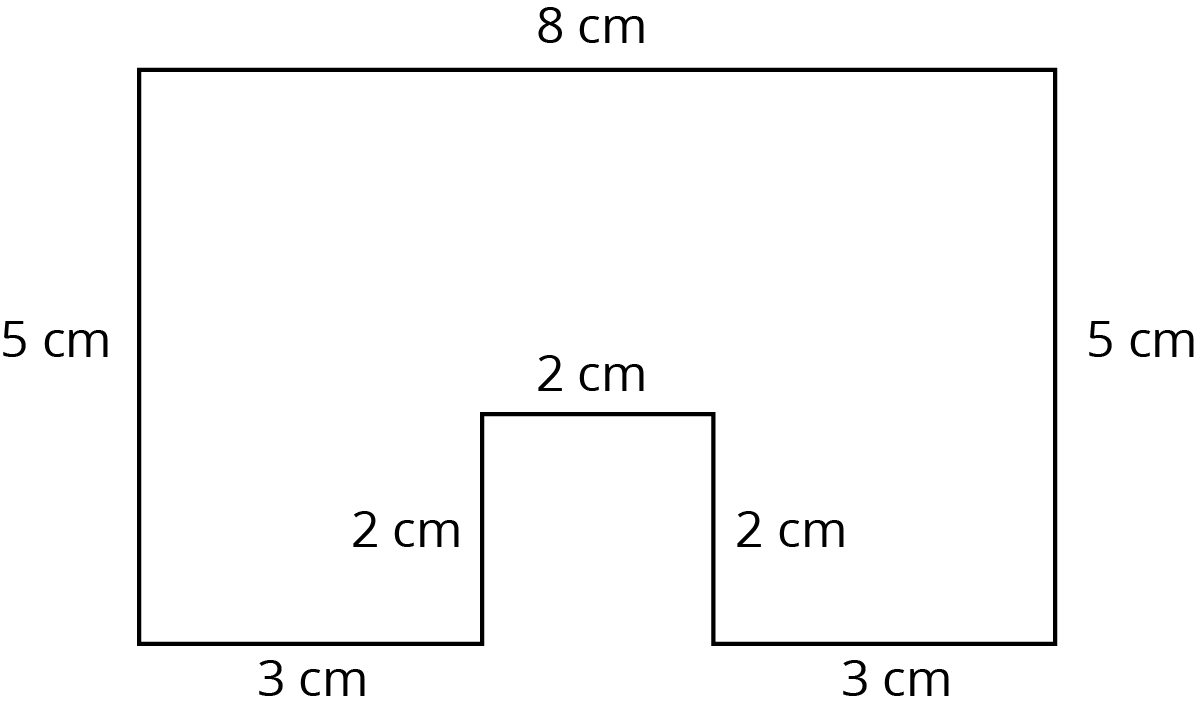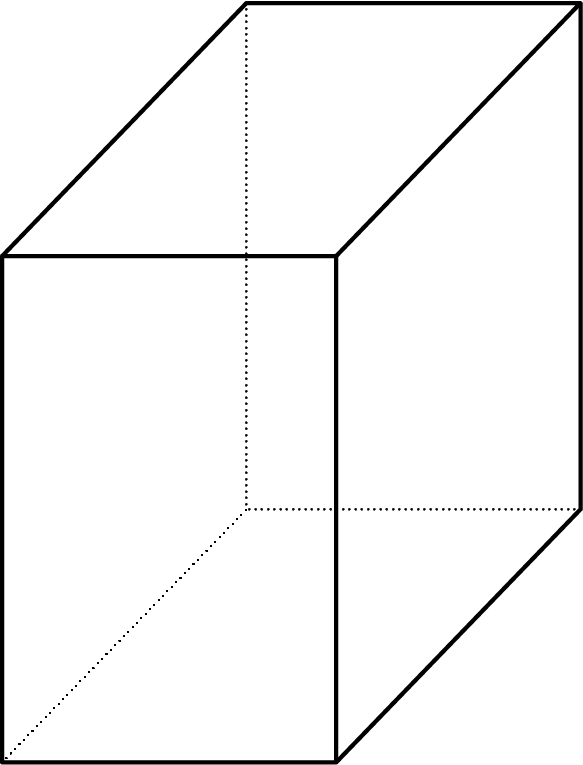Lesson 16
Surface Area of Right Prisms
Problem 1
Edge lengths are given in units. Find the surface area of each prism in square units.

Problem 2
Here is the base of a prism.

-
If the height of the prism is 5 cm, what is its surface area? What is its volume?
-
If the height of the prism is 10 cm, what is its surface area? What is its volume?
-
When the height doubled, what was the percent increase for the surface area? For the volume?
Problem 3
Select all the situations where knowing the volume of an object would be more useful than knowing its surface area.
Determining the amount of paint needed to paint a barn.
Determining the monetary value of a piece of gold jewelry.
Filling an aquarium with buckets of water.
Deciding how much wrapping paper a gift will need.
Packing a box with watermelons for shipping.
Charging a company for ad space on your race car.
Measuring the amount of gasoline left in the tank of a tractor.
Problem 4
Priya says, “No matter which way you slice this rectangular prism, the cross section will be a rectangle.” Mai says, “I’m not so sure.” Describe a slice that Mai might be thinking of.

Problem 5
\(B\) is the intersection of line \(AC\) and line \(ED\). Find the measure of each of the angles.
-
Angle \(ABF\)
-
Angle \(ABD\)
-
Angle \(EBC\)
-
Angle \(FBC\)
-
Angle \(DBG\)

Problem 6
Write each expression with fewer terms.
- \(12m-4m\)
- \(12m-5k+m\)
- \(9m+ k-(3m-2k)\)